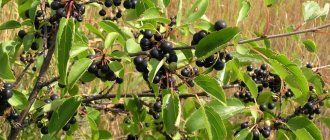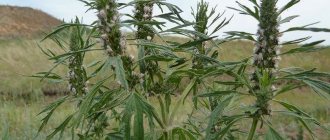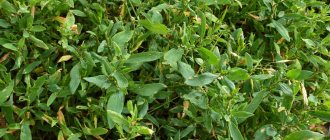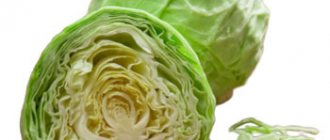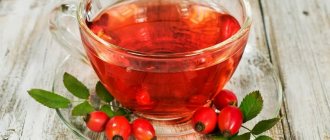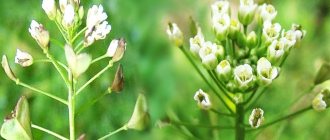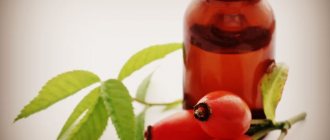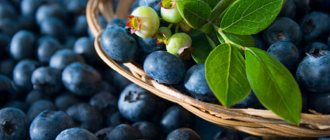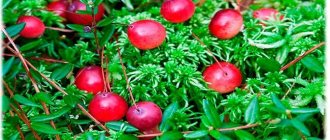Asparagus or asparagus is a perennial plant that belongs to the Asparagus family and is a close relative of onions and garlic. The shrub produces long, succulent and dense shoots, which have small needle-shaped leaves of different shades - from whitish to purple. These shoots contain many vitamins and microelements, so they are used in cooking and medicine.
What is asparagus
This is a perennial plant that is part of the large asparagus family, distributed throughout the Earth, in areas where a dry climate prevails. The plant has a developed, thick rhizome and long, succulent, branched, most often creeping shoots with small leaves resembling needles.
The tops of the shoots of some species are edible and are even considered a delicacy. The color of the foliage can be very different: green, whitish, pinkish, slightly lilac, etc.
Asparagus
From the product history
Traditional Russian cuisine practically does not consider asparagus as a full-fledged vegetable, but the plant is popular among vegetarians, raw foodists and people who are used to counting calories. In Europe, asparagus is especially valued in countries such as:
- Germany;
- Italy;
- France;
- England.
In different areas, preferences are given to different varieties of plants, which differ in color, taste and speed of ripening: the French love white asparagus, the British love green. In total, more than 100 varieties of this crop are known.
The history of the plant goes back to the times of Ancient Egypt, where it was presented as gifts to the goddess of love and fertility, Athena. In Ancient Greece, asparagus stems were used to decorate the newlyweds' beds, which was supposed to attract harmony to the young family.
It was only in Ancient Rome that asparagus was first used not as a medicinal plant or ritual element, but as a vegetable.
Types of Asparagus
There are about 200 types of asparagus. Some of them are herbs, others are subshrubs. Herbaceous species have remarkable nutritional or medicinal properties. There are very few species used in cooking. Let's talk about them in more detail.
Soy asparagus
Actually, “soy asparagus” has nothing to do with the asparagus family. It is a product derived from soy milk, which is an ingredient in Far Eastern cooking. In Chinese cuisine it is called "fupi" or "fuju", in Japanese and Korean - "yuba".
Important! Excessive consumption of soy foods increases the risk of pancreatitis, so consume it in moderation.
Here's how fuju is made: Soybeans are soaked until the beans swell to twice their size, then they are ground into a paste. The paste is pressed, and the milk is drained and boiled. The film that covers the surface of the milk is collected and dried for 10-15 days. The dried mass is “yuba” or “fuju”.
White asparagus
This crop is grown in loose, fertilizer-rich soil. Lack of light during growth makes the shoots white. Cultivation of this species is a very labor-intensive process, and that is why it is so expensive.
White asparagus, the first harvest of which is harvested in March, is considered a delicacy and is popular in many European cuisines. For a long time it was considered an aristocratic product and was present on the menus of only elite restaurants. But the established opinion that it is better than green is a big misconception. Read more about it.
See also: Sea buckthorn beneficial properties and contraindications
Did you know? The first recipe for a dish made from asparagus appeared at the end of the 4th, beginning of the 5th century. n. e., in the ancient Roman cookbook “The Apician Corpus,” compiled by the famous gourmet and glutton Apicius.
Green asparagus
Another name for this species is medicinal or Asparagus officinalis. The most common and widely cultivated crop from the asparagus family. Its homeland is the Caspian coast and the Mediterranean. For a long time, she was given less preference than white. However, today this injustice has been eliminated.
After all, green asparagus has a richer taste and, as it turns out, contains more nutrients. For example, chlorophyll, which is not present in white form, and which enriches the tissues of the human body with oxygen. Today, green asparagus is valued as highly as white asparagus.
Purple asparagus
This is the result of a special cultivation when the plant is grown in the dark, periodically allowing sunlight for short periods of time. As a result of this light regime, anthocyanins are formed - pigments that give plants their red, purple or blue color.
The disadvantage of such aesthetic experiments is the bitter taste of purple asparagus, which, by the way, when heat treated, acquires its native green color. Due to the difficulty of growing, the purple species is rarely found on market stalls and store shelves.
Bean asparagus
Like fuju, it has nothing in common with the asparagus family. It is more correct to call it “green beans”, which, like soybeans, belongs to the legume family. And it got its name due to the similarity of its unripe pods to asparagus sprouts. It is the pods that are used for food.
Green beans are an ideal food for vegetarians and vegans because they contain a lot of protein. Read more about this below.
Sea asparagus
Other names for this plant are salinos or salicornia. It also has no relation to the Asparagus family. However, this is not an algae, as the name suggests. This is a succulent from the amaranth family, the growing environment of which is very salty soils off the coast of seas and salt lakes, as well as ravines. Distribution area: Eurasia, Africa and North America.
The name of sea asparagus comes from its taste. On the one hand, it is quite salty, with the smell of iodine, on the other hand, it is similar in texture and taste to real asparagus shoots. Salicornia can be eaten fresh or processed. By the way, heat treatment helps get rid of excess salt.
See also: Peppermint - medicinal properties
Is it possible during pregnancy and breastfeeding?
During the period of bearing a baby, this crop is allowed to be consumed. It contains a huge amount of folic acid, which is extremely important for the proper development of the fetus. At the same time, the expectant mother’s well-being also improves: fatigue, causeless irritability, and insomnia disappear. Having a mild diuretic effect, asparagus removes excess fluid from the body. As a result, swelling disappears and digestion improves.
Asparagus shoots are not prohibited for a nursing woman, although it is recommended to consume them with caution. Such a plant can cause an allergic reaction in the baby and can cause flatulence and abdominal pain. Additionally, the taste of mother's milk may deteriorate, which usually leads to difficulties in feeding the baby.
Important! Before introducing asparagus into the menu of a nursing woman, it is important to familiarize yourself with its beneficial properties and contraindications for consumption. In addition, it is advisable to consult a doctor. The process itself should be gradual. Preference should be given to cooked sprouts.
At what age can it be offered to children?
Typically, a healthy product has a beneficial effect on a rapidly growing child’s body: it strengthens it and gradually eliminates the signs of vitamin deficiency. But if there is an allergy to the plant, the baby may suffer. Due to the fact that this product is sometimes difficult to digest by the intestines, it is best to offer it to a child for the first time after reaching the age of two. Sprouts used for food must undergo heat treatment (water, steam).
Attention! Before introducing asparagus into baby food, you should consult your pediatrician.
What's good about asparagus
The nutritional value of any type of product is determined by its rich content of nutrients.
- Soy contains micro- and macroelements such as: iron (Fe), potassium (K), calcium (Ca), lecithin and, of course, proteins.
- White contains: K, Ca and phosphorus (P).
- Green and purple contain: selenium (Se), K, P, magnesium (Mg), Fe, copper (Cu) and manganese (Mn).
- Legumes are rich in easily digestible protein, similar in properties to meat and fish proteins, as well as Mg, Ca, and Fe.
- Salicornia contains a lot of Na and iodine (I), as well as K, Mg, Ca, Fe.
Did you know? Asparagus was first described as a medicinal product by the famous Greek healer Hippocrates, back in the 4th century BC. e.
Let us recall the biological role of microelements that make up a particular species.
- Calcium strengthens bone tissue, nails and hair, as well as myocardial fibers. Part of the blood coagulation system, participates in the contraction of muscle fibers, transmission of nerve impulses, etc.
- Magnesium calms the central nervous system. Involved in protein synthesis. Makes bones hard. Accelerates the breakdown of glucose, preventing its conversion into fats. Stimulates the removal of toxins from the body. Accelerates the regeneration of all body cells.
- Sodium levels out the fluid and salt content in cells. Normalizes the functions of the kidneys, nervous system and muscle tissue. Retains minerals in the blood. Improves the transport of sugar through the blood to cells.
- Potassium equalizes the content of fluid and salts in cells, participates in the transmission of impulses along nerve fibers, and improves the functions of various parts of the brain.
- Vitamin P (rutin) strengthens bone tissue, nails and hair. Takes an active part in the regeneration of body cells, i.e. in all growth processes. Reduces pain in arthritis. Helps fill the body with energy.
- Iron is involved in hematopoiesis, forming hemoglobin, and increases the body's resistance to bacterial infections. Participates in the synthesis of thyroid hormones.
- Copper is involved in the synthesis of many enzymes and normalizes protein metabolism, controlling the growth of bone tissue.
- Manganese affects cell growth, hematopoiesis and the functioning of the gonads.
- Iodine is involved in the synthesis of thyroid hormones, which affect cell growth and development, as well as metabolism.
- Lecithin is involved in cell restoration and the functioning of the nervous system, and normalizes the functioning of the brain.
- Tyrosine reduces fat deposition, improves the functioning of the adrenal glands, thyroid gland and lower cerebral appendage.
- Asparagine normalizes the functions of the nervous system and is involved in the synthesis of ammonia.
- Succinic acid normalizes cellular respiration.
- Beta-carotene (precursor of vitamin A) is a powerful antioxidant, i.e. protects cells from the harmful effects of active oxygen. Participates in the regeneration of epithelial cells, increases their resistance to infections and tumor formations. Protects the skin from UV radiation.
Asparagus stalks
The shoots of white, green and purple asparagus contain the following beneficial substances: tyrosine, aspartic acid amide, vitamins A, B1, B2, C and PP, Ca, K and Fe, succinic acid.
Did you know? Asparagus leaves contain substances that accelerate the breakdown of alcohol breakdown products in the liver. Therefore, they are used to relieve hangovers.
In addition to the formation of connective tissue, strengthening bones and participating in hematopoiesis, macro- and microelements contained in asparagus stems help the functioning of the kidneys, liver, and genitourinary system.
The stems in their raw form are useful in recovering from colds. Decoctions of shoots are included in the complex treatment of cardiac neuroses. A tincture for eczema is prepared from the sprouts, which is used for lotions. Tincture recipe: infuse 30 g of asparagus stalks in 100 ml of alcohol for 2 weeks.
Asparagus berries
From late summer to mid-autumn, asparagus berries ripen, looking like bright red balls. Ripe fruits consist of more than 30% fructose. They also contain citric acid and vegetable fats. Therefore, ripe berries are collected and dried.
An infusion of berries helps in the treatment of hemorrhoids, dysentery and sexual disorders. Recipe for an infusion against impotence: throw 7 ripe berries into a thermos with boiling water (250 ml), close the lid and leave for 8 hours. Drink a tablespoon 4 times a day.
See also: Coltsfoot medicinal properties
Did you know? In the German Empire during World War I, asparagus seeds were used to produce ersatz coffee.
Asparagus juice
This is such a strong diuretic that it is not recommended in its pure form - the load on the kidneys is too high. Typically, asparagus juice is used in the form of a cocktail with other fruit or berry juices. In addition, it accelerates the breakdown of oxalic acid, so it is recommended for relieving gout attacks.
Juice is also an excellent cosmetic product. It is used to cleanse, soften and nourish the skin. Calluses and papillomas are also treated with juice lotions.
Protein content
Proteins (or polypeptides) are involved in almost all metabolic processes, as well as in the construction of intracellular structures. They act as signals transmitted between cells and participate in the creation of the extracellular matrix. The daily protein intake of an adult depends on his body type and ranges between 70 and 100 g.
Did you know? Asparagus is not only a food product. Due to their lushness, semi-shrub species are used in gardening and floristry.
Soybeans are very rich in proteins: 100 g contains more than 40 g of proteins, that is, by eating 180-200 g of “Korean asparagus”, you will cover your daily protein intake. The remaining species are poor in polypeptides. Protein content in other types of asparagus (per 100 g of product):
- white, medicinal and purple - 2 g;
- legumes - 3 g;
- sea - 5 g.
See also: Potato juice - benefits and harms
For weight loss
Due to the low calorie content of the product, nutritionists often and willingly use it. Creating a menu based on asparagus will help you fight extra pounds and get rid of cellulite. Sometimes the plant is used as a laxative to remove toxins, excess fluid, and fecal stones. The product normalizes intestinal function, helping to lose up to 2 kg per week.
This result is achieved due to the high content of fiber, dietary fiber, vitamins and minerals, thanks to which a person does not feel hungry and is in a good mood.
Asparagus burns fat perfectly, normalizing lipid metabolism. It can be eaten daily, not excluding the decoction in which asparagus was cooked - it can be drunk half an hour before meals or in the morning on an empty stomach.
But it is not recommended to abuse the product: you should take breaks from taking it or make your diet varied, including sprouts of the product in the menu 2 or 3 times a week.
Vitamin content
Types of asparagus and the vitamins they contain:
- soybean: A, B1, B2, B5, B6, B9, B12, C and PP;
- white: A, B1, B2, C, E;
- green and purple: A, B1, B2, B4, B9, C, E;
- legume: A, B1, B2, B4, B9, C, E;
- marine: A, B1, B15, C.
The effect of vitamins on the human body:
- A (retinol) affects cell regeneration. Maintains skin elasticity and moisture and is responsible for its rapid recovery. Strengthens the immune system, especially in children, promoting their normal development;
- B1 (thiamine) is involved in metabolism. Improves brain function (memory, concentration, etc.) and emotional state. Stimulates the growth of muscle and bone tissue. Slows down aging;
- B2 (riboflavin) is involved in the synthesis of red blood cells. Accelerates the breakdown of iron. Strengthens the immune system. Improves skin condition, promotes rapid healing of wounds;
- B3 or PP (nicotinic acid, or niacin) is involved in cellular respiration reactions and other biosynthesis processes, as well as in protein, fat, and amino acid metabolism. Dilates capillaries, especially in the brain. Blocks blood clotting;
- B4 (choline) increases cell resistance to harmful influences;
- B5 (pantothenic acid) is involved in important metabolic reactions, especially fatty acids. Stimulates the synthesis of adrenal hormones. Forms antibodies, helps the absorption of other vitamins. Participates in the synthesis of neurotransmitters. Has a powerful restorative effect on mucous tissue. Stimulates intestinal motility. Suppresses the biosynthesis of lipids that have a harmful effect on liver function;
- B9 (folic acid) is involved in cell regeneration and keeps them healthy. Therefore, it is important in the first months of pregnancy, as well as for infants. Participates in DNA replication and red blood cell division in the bone marrow. Also takes part in the production of sperm;
- C (ascorbic acid) strengthens blood vessels, preventing various bleeding. Smoothes out wrinkles. Strengthens nerves, thereby improving emotional state and quality of sleep. Strengthens hair roots. Improves vision and brain functioning, in particular, increases concentration.
- E (tocopherol) is the most powerful antioxidant. Slows down cell aging. Positively affects the circulatory system.
Benefits for women
Asparagus is able to regulate the production of sex hormones, easing the condition of women with PMS and menopause. The folic acid content makes the product useful for pregnant women, helping the baby to form correctly in the womb.
The product is able to reduce the amount of air in the intestines (prevent bloating), which has a beneficial effect on the condition of women during menstruation - pain decreases, mood improves, hormonal levels remain stable.
The juice of the plant can be used to make homemade cosmetics. Lotions, creams, masks and other products will help improve the condition of the skin and hair, relieve problems with inflammatory formations on the face, neck and décolleté, and cope with hair loss.
Calorie content
The daily norm of energy consumption is different for each person and depends on his profession, additional physical activity, gender and anthropometry. For some, the norm is 2000 kcal/day, and for others – 4000 kcal/day. The excess turns into dormant fat energy. The more of these fats, the worse it is for a person.
That's why some people are so careful about their diet. And in this regard, real asparagus is an excellent product for a healthy life, since it has very few calories. But the same cannot be said about fuju, rich in proteins and vegetable fats.
Calorie content of different types of asparagus (per 100 g of product):
- soybean - 390 kcal;
- white, medicinal and purple - 20 kcal;
- legumes - 50 kcal;
- sea - 130 kcal.
Despite the high calorie content (much more than that of wheat bread), soy asparagus is very healthy, because it contains many valuable substances. It is indispensable for people suffering from allergies to gluten (wheat protein) and milk protein.
Contraindications and harm
Despite all the benefits, asparagus can be harmful when consumed in large quantities:
- enhances kidney function and, as a result, gives urine an unpleasant odor, since it consists of 94% water;
- causes the development of diabetes mellitus.
In addition, there are indications for which you should avoid using asparagus. These include:
- individual intolerance to substances contained in this plant;
- increased tendency to allergies (in some people with this problem, even simple contact with asparagus can cause hives);
- stomach and duodenal ulcers;
- acute gastrointestinal diseases, since asparagus irritates the gastric mucosa;
- predisposition to urolithiasis, since eating asparagus can lead to an excess of oxalic acid salts and provoke the development of the disease;
- acute cystitis, prostatitis;
- articular rheumatism.
If there are no contraindications, then asparagus can be confidently used not only in cooking, but also in cosmetology and medicine.
Medicinal properties
As already mentioned, asparagus, in addition to its nutritional value, also has medicinal properties, especially Asparagus officinalis, i.e. medicinal. But first things first. Fuzhu is recommended for the prevention of osteoporosis, malignant tumors and cardiovascular diseases.
White, green and purple asparagus have a beneficial effect on the functions of the kidneys, liver, gastrointestinal tract and even the heart. They are recommended for the complex treatment of epilepsy, diabetes, dropsy, hemorrhoids, allergic reactions, arthritis and, of course, obesity.
Also, medicinal asparagus is useful for pregnant women and is used in the treatment of urological diseases in men (read more about this below).
Green beans, according to experts, are useful for preventing cardiovascular diseases (arrhythmia, hypertension, atherosclerosis, etc.), pyelonephritis, urolithiasis (urolithiasis), etc.
Sea asparagus is used as a urinary and diaphoretic, anti-inflammatory, laxative and invigorating agent. A decoction of it is drunk for cystitis, kidney stones and dropsy. Salicornia alcohol tincture is an excellent anti-inflammatory agent. It is recommended to rub into joints for gout, arthritis and rheumatism.
See also: Calendula medicinal properties
For men
Even in ancient Egypt, and then in Greece, court healers recommended asparagus to the pharaohs and kings as a means to increase their male strength. Modern science has confirmed these guesses of ancient healers.
Yes, indeed, medicinal asparagus juice contains aspartic acid amide - an amino acid that is used today for the prevention and treatment of diseases of the prostate gland and urinary system, as well as to increase potency.
During pregnancy
Due to its high content of vitamin B9 (or PP), asparagus officinalis is very useful during pregnancy and lactation. After all, folic acid is involved in hematopoiesis, DNA synthesis, cell growth and reproduction, and the formation of the nervous system and brain of the future person.
If there is a deficiency of folic acid in the body of the expectant mother, the formation of the placenta may be disrupted, and in the future, its detachment may occur; the fetus may develop a heart defect or a defect such as a cleft lip. The likelihood of miscarriage or fetal developmental delay also increases.
Important! As Paracelsus said: “Everything is poison and everything is medicine - this is determined by the dose.” So, a pregnant woman’s daily need for vitamin B9 should not exceed 0.4 mg, which corresponds to 150 g of fresh asparagus.
For diabetes
Asparagus officinalis is very effective in the complex treatment of diabetes. After all, for all its richness in minerals and vitamins, it is a low-calorie product, and this is vitally important for diabetics who are predisposed to excess weight.
But its main therapeutic properties in this case are regulating blood sugar and normalizing the functioning of the pancreas. Its constant use helps stabilize insulin in the body.
How to cook
There are a great many recipes for preparing different types of asparagus. There are so many of them that you could compile a separate cookbook, so we will limit ourselves to describing the general cooking rules. All types of asparagus are used either as side dishes for other products or as part of some dishes.
Preparation of soybean fuju . Fuzhu (or yuba), the production technology of which was described above, is not a ready-to-eat product, but a semi-finished product that needs to be refined before being included in other culinary recipes. The preparation process is very simple: fuju is soaked for 24 hours in cold water, and after it swells, it is squeezed out, removing all moisture.
Important! Some cooks, citing a lack of time, pour boiling water over the fuju to quickly soak it for 2 hours. But in this case, the product turns out to be tougher and loses its gastronomic value.
Tips for cooking white, green and purple asparagus.
- Asparagus is eaten fresh, boiled, fried, baked and steamed.
- You can peel the stems with a potato peeler, while the green one should be peeled from the middle of the sprout down, and the white one should be peeled only the upper part.
- Before cooking, asparagus should be blanched for 5 minutes in salted boiling water.
- The most common method of preparation is to boil the shoots tied into a bunch, in a standing position, so that the tender tops stick out of the water and are not boiled, but steamed.
- When cooking, lemon juice added to water improves the taste of asparagus shoots.
- To ensure that the stems are crispy after cooking and retain their color, they are immediately cooled in cold water.
Preparing green beans . The seeds of unripe bean pods contain phaseolunatin, an enzyme that can cause food poisoning due to the hydrocyanic acid it contains. To prevent this from happening, the pods must always be heat treated.
The most common method of preparing green beans is boiling. It is immersed in boiling water for 5 minutes. Otherwise, it will spread into fibers.
The secret to cooking sea asparagus . Due to the significant salt content in salicornia, it is prepared without adding salt and, if boiled, in a large amount of water.
Growing
Asparagus is propagated by sowing seeds, dividing the rhizomes of an adult plant, or by cloning through tissue culture in vitro. Due to the dense shell, the seeds germinate very slowly, even at a temperature of 25°C.
To force events:
- The seeds are soaked in hot water (40°C) for three days. The water is changed daily.
- Next, the seeds are dried at room temperature.
Under such conditions, the seeds will germinate within 7-10 days.
Plant the seeds in beds or boxes to a depth of 3 cm in the first half of April. Sprouts that have grown to 10 cm are planted onto a permanent bed according to a 15x20 cm pattern.
For wintering, shoots up to 10 cm tall are left, cutting off the rest of the formed stem. In the spring, a permanent site is selected for seedlings. The soil surface is actively fertilized with organic matter and dug up.
It is better to plant asparagus in loose, soft soil fertilized with manure. During the summer months, 1-2 fertilizing is carried out with ammonia fertilizer. The plantation will begin to bear fruit only in the 2nd year.
In the first two years of growing asparagus, the row spacing can be used for legumes and radishes.
Preparing asparagus seeds for planting
The technology for direct sowing of asparagus seeds involves pre-soaking them in a warm place for 5-6 days. The water is changed to fresh water every day. After soaking, the seeds are wrapped in a damp cloth and left to germinate for 5-6 days. The fabric is covered with film or a bag. If you follow the recommendations, the seeds will germinate in 8-12 days.
Potted seedling technology
This method of growing asparagus allows you to get more developed plants by autumn than when planting germinated seeds. The basic principle remains and provides:
- soak;
- germination;
- sowing in seedling cassettes or containers with a volume of 100-200 ml.
Seeds with roots from 1 to 25 mm are suitable for sowing. Soil for cucumbers is suitable as soil. Asparagus seedlings in pots are planted in early June.
Caring for asparagus involves timely watering, loosening the soil and removing weeds.
How to choose
There are no difficulties in choosing soybean, bean asparagus and salicornia. But real asparagus contains certain secrets. The asparagus harvest season begins at the end of March and ends at the end of June. It is believed that early shoots are the most tender and delicious. When buying asparagus, you need to pay attention to the length of the sprouts.
The most delicious specimens should not be longer than 15 cm from the top. You also need to pay attention to the shape and density of the shoots: in high-quality asparagus they are round (not flat or ribbed), elastic and not too thin, with a uniform color (no dots or spots) and dense, closed tips. Fresh stems are odorless. High-quality packaging should not contain condensation.
